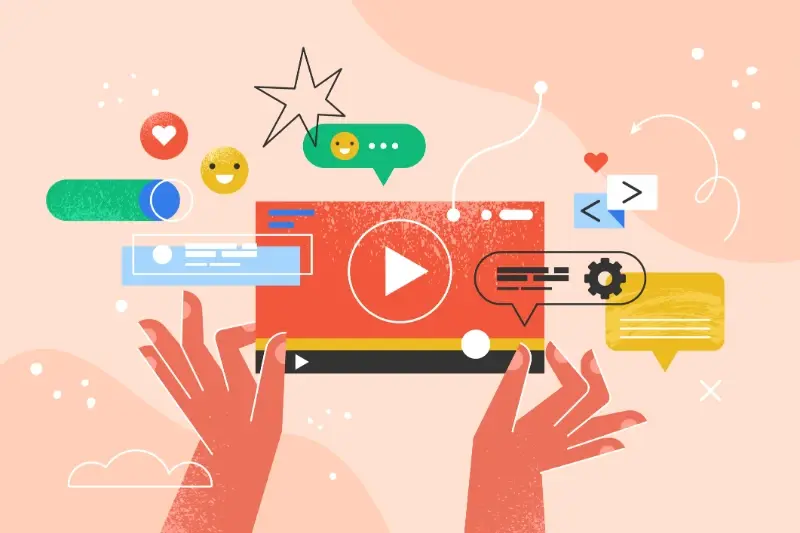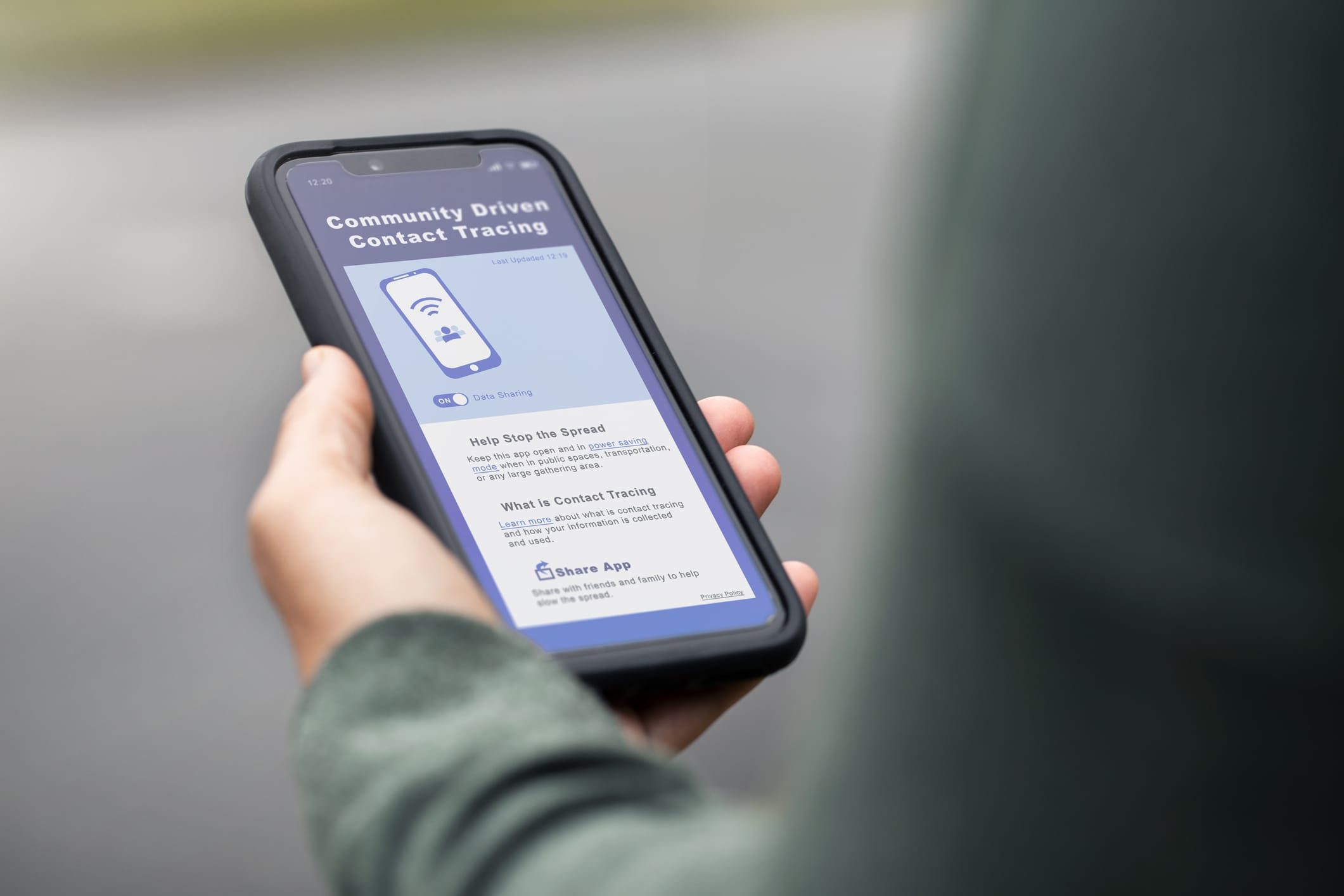Enterprise App Design Trends Boosting Workplace Productivity
The way we work has changed. Gone are the days of clunky enterprise software with confusing interfaces that required weeks of training. Modern enterprise app design is sleek, intuitive, and genuinely helpful—it's making a real difference to how organisations function. Having worked with dozens of corporations to transform their mobile workflows, I've seen firsthand how good design can turn frustrating processes into productive experiences.
Enterprise apps used to be an afterthought; something businesses felt they needed but didn't quite understand why. Now they're at the centre of workplace transformation. Companies are investing in custom mobile experiences that actually work for their employees—not against them. The shift is dramatic; corporate mobile UX now focuses on solving real problems rather than ticking feature boxes. This is something I wish more businesses understood earlier—a well-designed app isn't just nice to have; it directly impacts the bottom line through improved efficiency and employee satisfaction.
Enterprise apps should fade into the background of work life, empowering employees without making them think about the technology they're using.
In this post, we'll explore the design trends that are making enterprise apps more effective and enjoyable to use. From minimalist interfaces to AI personalisation, these approaches are changing how work gets done. Whether you're planning your first corporate app or looking to update existing systems, understanding these trends will help you create tools that people actually want to use—and that's half the battle when it comes to workplace productivity.
The Evolution of Enterprise App Design
Enterprise app design has come a long way—think back to those clunky, feature-heavy corporate apps that made you want to throw your phone across the room! The earliest business apps were basically desktop software crammed into mobile form factors, with tiny buttons and confusing navigation that left users frustrated and unproductive.
Around 2015, we started seeing a major shift. Companies began to realise that their staff wouldn't use apps that were painful to interact with, no matter how mandatory they made them. User experience finally took centre stage, and the focus moved towards creating apps that employees actually wanted to use. This wasn't just nice to have; it was directly linked to adoption rates and ROI.
Key Milestones in Enterprise App Evolution
- Function-first approach (pre-2015): Complex interfaces with overwhelming features
- Mobile-first thinking (2015-2018): Simplified interfaces adapted for on-the-go use
- Experience-first design (2018-present): User-centric apps with intuitive workflows
- Integrated ecosystems: Apps that connect seamlessly with other workplace tools
What's fascinating is how enterprise apps have gone from being the ugly ducklings of the app world to setting trends that consumer apps follow. The best enterprise apps now balance powerful functionality with elegant simplicity—they're designed to make work feel less like work. And that's the sweet spot we're all aiming for, isn't it?
Minimalist Interfaces and Focused Functionality
Less is more when it comes to enterprise app design. Gone are the days of cluttered screens with endless buttons and options. Today's corporate mobile UX takes inspiration from consumer apps—clean, simple, and straight to the point. We've seen this shift first-hand at Glance, where our enterprise clients are increasingly requesting stripped-back interfaces that help employees accomplish tasks quickly.
The Power of Simplicity
What makes minimalist design so effective? It's not just about looking nice—it's about removing distractions. When an employee opens an app to approve a purchase order or check inventory, they don't need fifteen other functions competing for attention. Each screen should serve a clear purpose and guide users towards completing specific tasks without unnecessary steps or information—this reduces cognitive load and speeds up task completion.
When designing enterprise apps, ask yourself: "Could I remove anything else from this screen while maintaining functionality?" If the answer is yes, do it!
Task-Based Navigation
Modern enterprise apps are moving away from complex menu structures towards task-based navigation. Instead of organising by department or feature, they're structured around what users actually need to do. This might mean prominently featuring a dashboard with quick actions or personalised workflows based on job roles. The goal? Let employees complete common tasks in three taps or fewer—anything more and you're wasting valuable work time.
I've watched countless user testing sessions where employees struggle with overly complex apps; their frustration is palpable. When we redesign these same systems with focused functionality, the difference in productivity and satisfaction is dramatic. Users don't want endless options—they want to get their work done and move on with their day.
AI-Powered Personalisation in Corporate Apps
The way we work with enterprise apps is changing dramatically thanks to artificial intelligence. Gone are the days when everyone got the same app experience—AI now tailors interfaces and content to match how each employee works. I've seen firsthand how this shift creates more productive workplaces and happier staff.
AI personalisation works by learning from your behaviour. It notices which features you use most often and brings them forward, hiding the ones you rarely touch. This means less time hunting through menus and more time getting things done. For example, if you're always checking inventory reports, the app will make those more prominent for you—but not for your colleague in HR who never uses them.
Key Benefits of AI Personalisation
- Time savings—employees spend less time navigating interfaces
- Reduced training needs as apps adapt to individual working styles
- Increased productivity through smarter notifications and suggestions
- Better employee satisfaction with tools that feel made just for them
What I find most exciting about this technology isn't just that it makes apps easier to use; it's that it creates a virtuous cycle. The more you use an AI-powered app, the better it understands you, and the more helpful it becomes. This creates a surprisingly personal connection between workers and their digital tools. And let's be honest—when was the last time anyone felt emotionally attached to their enterprise software? That's the real revolution happening here.
Collaborative Features That Scale
When enterprise apps get the collaboration bit right, productivity skyrockets—it's a simple fact. Modern workplaces connect teams across buildings, cities and continents, so enterprise app design must support seamless teamwork regardless of size. I've seen companies struggle with apps that buckle under pressure when team size grows; it's like watching a house of cards collapse!
Real-time syncing that works
The best enterprise apps now offer document co-editing without those annoying conflicts or freezes. Think Google Docs but built for your specific business needs—where changes appear instantly and everyone stays on the same page. What's brilliant is how these features work just as smoothly with 5 users as they do with 500. Smart caching and data syncing techniques mean even large files don't bog down your device.
The difference between good and great enterprise apps is how they handle collaboration at scale—when 200 people can work together as effortlessly as 2, that's when real transformation happens.
Communication that integrates
Corporate mobile UX has evolved beyond basic messaging. Modern enterprise apps embed contextual communication directly into workflows—comments on specific data points, in-app video calls with screen sharing, and smart notifications that know when to alert you (and when not to). The key is making these features feel light and natural; nobody wants yet another complicated tool to learn. The apps that get this right become the backbone of productive teams—connecting people to what matters without getting in the way.
Security Innovations in Enterprise Mobile UX
Security doesn't have to mean terrible user experience—this is something I've learned after years of developing enterprise apps. Gone are the days when employees would groan at clunky authentication processes! Modern enterprise apps now seamlessly integrate robust security measures without making users want to throw their devices out the window.
Biometric authentication has been a game-changing addition to enterprise app security. Face ID, fingerprint scanning, and even voice recognition allow employees to access sensitive company data quickly while maintaining security standards. I've seen firsthand how this simple change can save workers hours of cumulative time they'd otherwise spend typing passwords.
Top Security Features That Don't Sacrifice UX
- Contextual authentication—changes security requirements based on location and network
- Single sign-on (SSO) with stepped verification for different access levels
- Automatic session timeouts that are intelligent and non-disruptive
- End-to-end encryption visualised through simple UI elements
- Privacy screens that activate automatically in public spaces
Another brilliant innovation is micro-segmentation of app permissions. Rather than the all-or-nothing approach of the past, enterprises can now grant access to specific features based on job roles; this means fewer frustrations for employees who just need to complete their tasks without unnecessary barriers. The best security designs are the ones users barely notice—they simply work in the background, protecting company data while letting people get on with their jobs. Understanding app development trends helps businesses stay ahead of evolving security requirements.
Offline Capabilities and Enhanced Performance
In enterprise app design, connectivity isn't always guaranteed—especially for teams working remotely or travelling. This reality has pushed offline capabilities to the forefront of modern corporate mobile UX. Apps that function without an internet connection aren't just convenient; they're becoming a necessity for uninterrupted workflow. Think about it—how many times has your work been halted because an app needed to "connect to the server" at the worst possible moment?
Progressive Web Apps vs Native Solutions
The debate between PWAs and native apps continues, but for enterprise solutions, native apps often win on the performance front. They're typically faster and integrate better with device features—a must for complex business processes. That said, PWAs have made incredible strides and offer cross-platform benefits that can't be ignored. I've seen companies use both approaches successfully; it really depends on your specific business needs and user scenarios.
When building offline-ready enterprise apps, prioritise data synchronisation logic. Nothing frustrates users more than lost work or conflicts when they reconnect!
Performance Optimisation Techniques
Performance isn't just about speed—it's about perception too. Techniques like skeleton screens and background data fetching can make apps feel faster even when they're processing complex operations. For enterprise apps handling large datasets, implementing efficient caching strategies and compressed data transfers can dramatically improve response times—which directly impacts productivity. We've seen companies increase daily task completion rates by up to 40% simply by optimising these performance elements in their custom apps. Choosing the right mobile app development tools can significantly impact these performance outcomes.
Dark Mode and Accessibility Considerations
Dark mode isn't just a trendy design choice—it's becoming a workplace necessity. I've seen countless enterprise users switch to dark interfaces to reduce eye strain during those long office hours (we've all been there with those late-night deadlines!). The reduced brightness helps prevent headaches and actually saves battery life on OLED screens, meaning your app can run longer between charges when employees are working remotely or travelling.
Beyond Dark Mode
Accessibility in enterprise apps goes far beyond just colour schemes. Voice navigation has become standard practice, allowing employees to interact with apps hands-free while multitasking. Text-to-speech features are no longer nice-to-haves but must-haves—they enable users with visual impairments to stay productive and keep up with their colleagues. And let's not forget adjustable text sizes; the days of squinting at tiny font are thankfully behind us.
The smartest enterprise apps now include high-contrast options, clear navigation paths, and thoughtful keyboard shortcuts that make daily tasks quicker to complete. I cannot emphasise enough how these seemingly small details make a massive difference to workplace efficiency. When employees don't have to fight with the interface, they can focus on what actually matters—their work. Companies that have embraced these accessibility features report lower training times and higher adoption rates; plus they're future-proofing their digital workplace for an increasingly diverse workforce. Learning
Share this
Subscribe To Our Blog
You May Also Like
These Related Stories

Future Of Mobile App Psychology

Entertainment App Trends 2025: What Users Want From Their Media Apps





